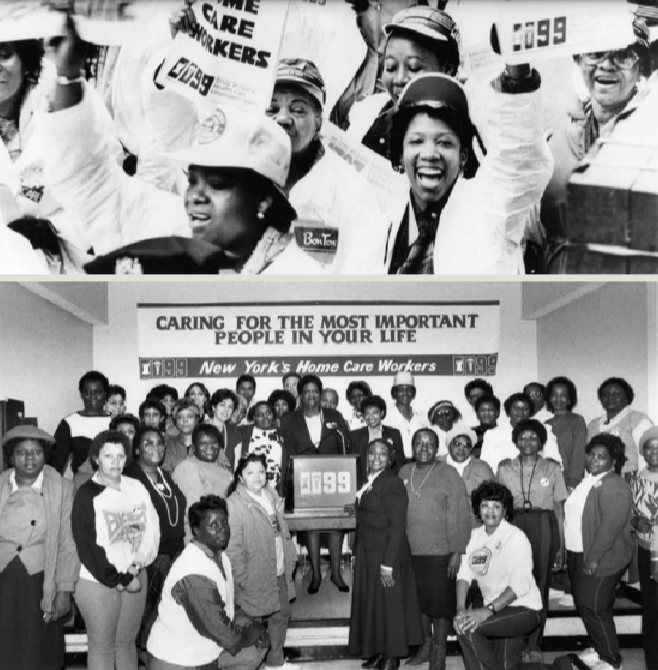HOME CARE MEMBERS FIGHTING BACK
January 4, 2023
Their road to justice has been long and winding

In April, Home Care members in the state won a $3-an-hour increase over minimum wage, amounting to a 20 percent increase.
Nonetheless, home care workers’ fight for the wages and benefits they deserve is far from over. The majority are still overworked, undervalued and underpaid. Since 1199 first took on the unpopular task of organizing these dedicated workers in 1987, slowly but surely, improvements have been won. When the union first began organizing them, the home care workers earned less than $5,000 a year.
A year prior to that, the reformist Save Our Union movement earned back the leadership of a divided Union.
The new leaders immediately sought to restore internal unity, as well as 1199’s reputation as champions of democracy and social justice. And just as 1199ers rose to the task of organizing poorly-paid hospital workers three decades earlier, they decided it was only right to do the same for home care workers. Similar to the earlier hospital organizing campaign, the Union envisioned the fight as a civil rights and social justice crusade.
The majority of the home care workers were African-American and Latina women—but a growing percentage were immigrants from Russia, Haiti and Asia—especially China.
Numerous obstacles had deterred other unions from organizing these workers, who were not covered by minimum wage laws and other labor legislation. They were also routinely classified as “independent contractors.”
The Union began its “Crusade for Justice” by holding a spring 1987 press conference on the steps of St. Patrick’s Cathedral in Manhattan. They were there at the invitation of John Cardinal O’Connor, Archbishop of New York. The Union had also won support of others in the faith community, including the Rev. James Forbes of New York City’s prestigious Riverside Church.
The Rev. Jesse Jackson, who would one year later wage a valiant campaign to become the Democratic Party nominee for president, also spoke at the spring press conference. One month later, he and Cardinal O’Connor addressed a mass rally called jointly by 1199 and DC 1707 of the American Federation of State County and Municipal Employees (AFSCME), which also represented New York City home care workers. Such an alliance was unusual within the labor movement at the time.
Manhattan Borough President David Dinkins, who earlier in the year had called a special hearing to help expose the harsh plight of the workers, led the assembly of political leaders at the rally. Two years later, Dinkins was elected New York City’s first AfricanAmerican mayor.
The campaign bore fruit in the spring of 1988, when the workers won a 51 percent raise over three years, and for the first time, health care benefits. That year, the Union also established the Home Health Care Division.
Despite these major gains, home care workers remained far behind others in health care.
Three years after winning their first contract, 10,000 members marched in Manhattan during a one-day strike. Two months later, they held a two-day strike. Six months after that, they won a contract that, for the first time, provided a pension and training benefits.
1199 home care members were also on the frontlines of the Fight for $15 campaign. Begun in 2012, the movement eventually won legislation to raise the minimum wage to at least $15-anhour in all the states where 1199 has a presence: New York, New Jersey, Massachusetts, Maryland and Florida.
Although a large percentage of the Union’s 125,000 home care members head singleparent households—they are among the most active and loyal 1199ers. Whenever the call goes out to support 1199-endorsed candidates at election time— home care workers are there. Anicia Council, a home care worker with Accent Care, is one of those members carrying on a long tradition. In October, she travelled from her home in Harlem, all the way to southern New Jersey on a union bus to canvass door-to-door for US Congressman Andy Kim, who went on to win his race handily.
“I’m proud to be a union home care worker,” Council says, “and I know how important it is to support the elected representatives who have our backs in Washington.”
1199 Magazine: November - December 2022

